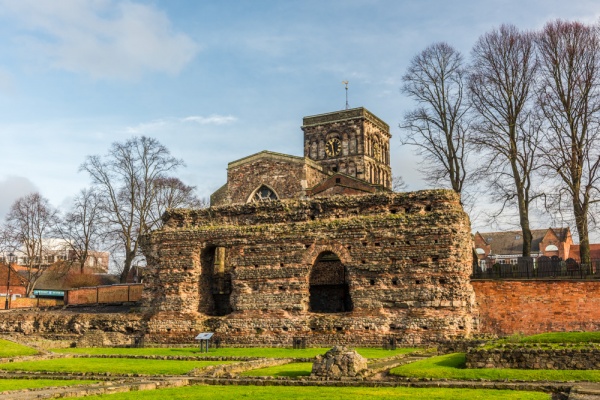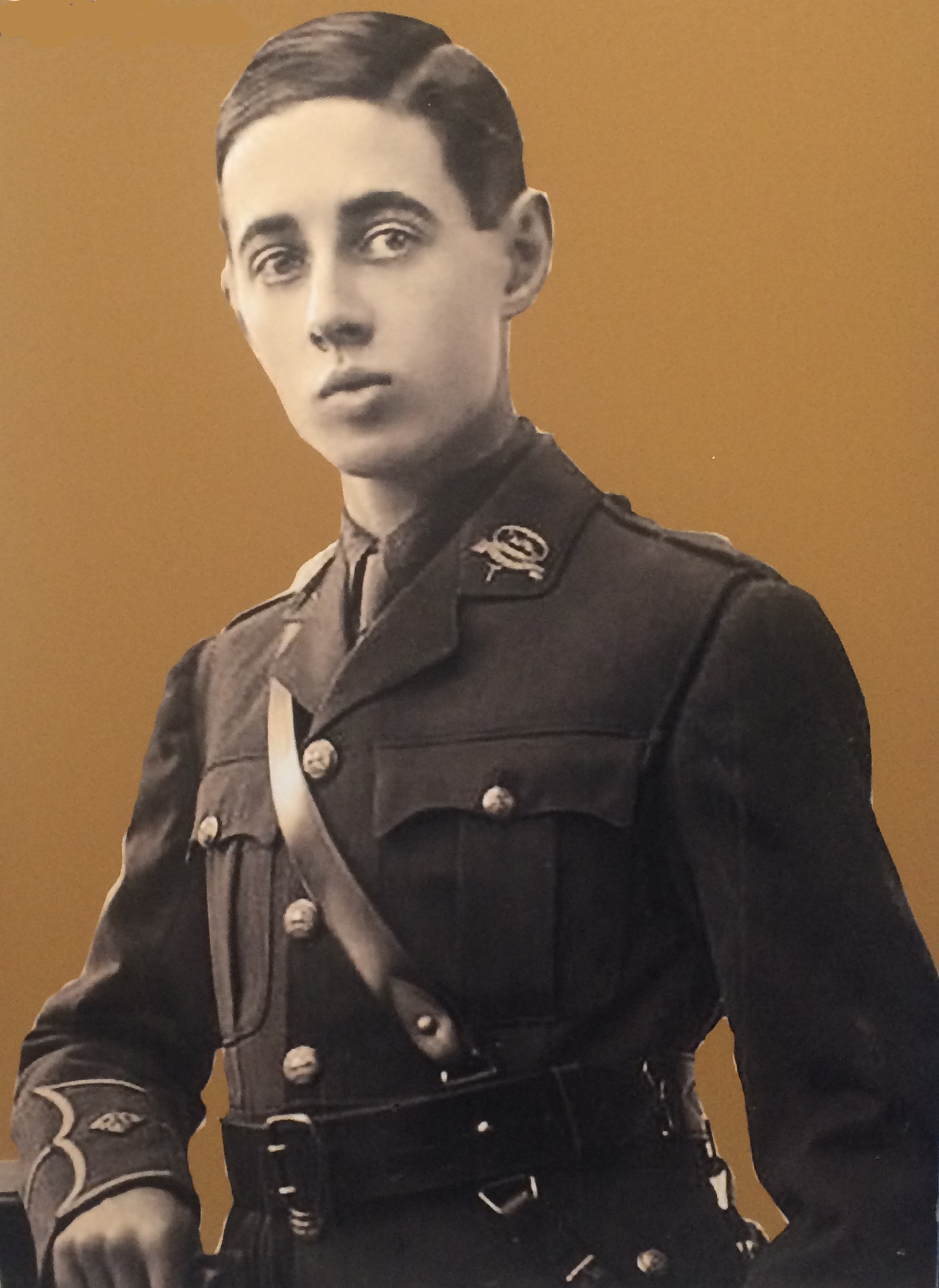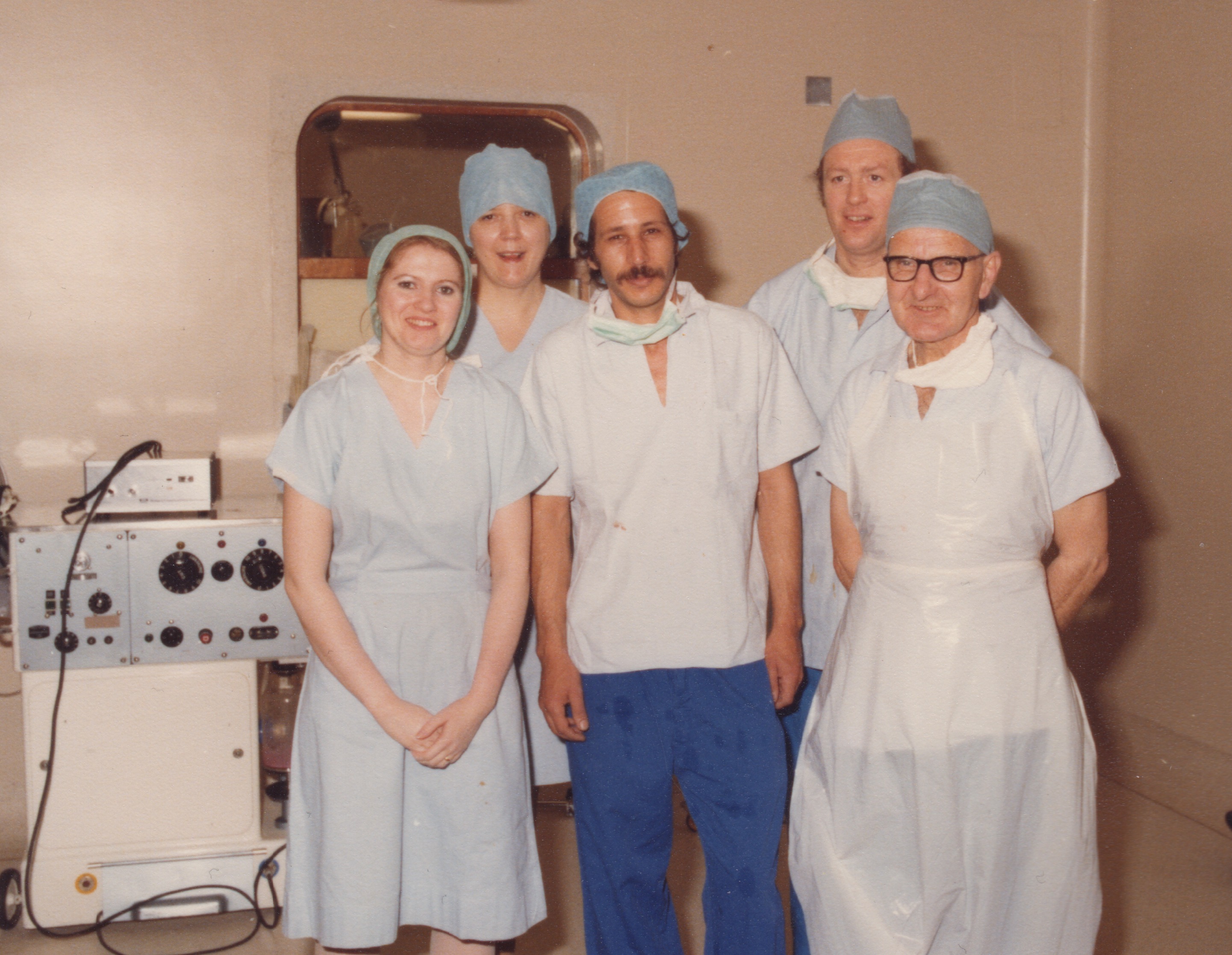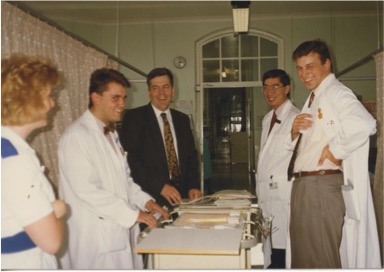Virtual Museum
Hospitals and Institutions Room
Leicester Urology Department
Leicester General Hospital
Roman Leicester
 There was a settlement in Leicester, nestled between two branches of the river Soar, before the Romans came. The Romans fortified this area, calling it Ratae Corieltauvorum, meaning the ramparts of the Corieltauvi, the Celtic people of that area. The Romans were well versed in medicine and surgery but, to date, no Roman urological instruments have been excavated in Great Britain.
There was a settlement in Leicester, nestled between two branches of the river Soar, before the Romans came. The Romans fortified this area, calling it Ratae Corieltauvorum, meaning the ramparts of the Corieltauvi, the Celtic people of that area. The Romans were well versed in medicine and surgery but, to date, no Roman urological instruments have been excavated in Great Britain.
(Pictured left - remains of a Roman bathhouse in Leicester)
Medicine in Medieval Leicester
We know the names of several Leicester doctors from the mediaeval period. In 1196, William Medicus is recorded in the first merchant guild roll of Leicester, paying his pledges to the Guild on entry of 1 shilling and then a further 2 shillings.
In 1232, Robert the leech (an ancient name for doctor) held tenements in Fullers Street, now Soar Lane and, around 1251 – 55, Richard the leech was a witness to a grant of land from William Ordriz to the mayor and burgesses, probably for the building of the Guildhall.
The huge and impressive Leicester Abbey owned an extensive medical library, including John Gaddesden’s Rosa Anglia, Issac Judeas’ Urinas, Avicenna, Averadros, Galen, Lanfranc, Gilbert and Constatinus.
 There were several hospitals in Leicester founded in mediaeval times. These, however, were for the care of the elderly or chronic sick e.g. St Edmund’s for Lepers (also known as The Spital) founded by William the Leper (son of Robert Earl of Leicester) on Belgrave Road. The Trinity Hospital (pictured right) was founded by Henry Plantagenet, Earl of Lancaster and Leicester, in 1330 for 50 old men and 50 old women. It still stands and is now part of De Montfort University. It is thought that the famous mediaeval surgeon John of Ardern was surgeon to the Earl.
There were several hospitals in Leicester founded in mediaeval times. These, however, were for the care of the elderly or chronic sick e.g. St Edmund’s for Lepers (also known as The Spital) founded by William the Leper (son of Robert Earl of Leicester) on Belgrave Road. The Trinity Hospital (pictured right) was founded by Henry Plantagenet, Earl of Lancaster and Leicester, in 1330 for 50 old men and 50 old women. It still stands and is now part of De Montfort University. It is thought that the famous mediaeval surgeon John of Ardern was surgeon to the Earl.
The 18th Century
William Cheselden (1688 - 1752), the famous surgeon and lithotomist, was born in Somerby, near Burrow on the Hill, Leicestershire. He was apprenticed to a Leicester surgeon called Mr Wilkes before moving to London to train further and become a great surgeon and anatomist.
The Leicester Royal Infirmary, an 18th century Voluntary Hospital was founded in 1771. We know that, in the 19th century, the Infirmary owned a Herteloupe table for performing lithotrity.
Urology in Leicester
 Like many UK departments, Leicester began with no dedicated urology at all. In the 1930s, all general surgeons in Leicester carried out some urological procedures, in particular, Colonel John Barrett and Ernest Frizelle. John Cridlan Barrett (pictured right) was Senior Surgeon at the Leicester Royal Infirmary (LRI) and spearheaded the building of a day-case theatre, where the first dedicated provision of urology began. He was Leicester’s first BAUS member in 1953.
Like many UK departments, Leicester began with no dedicated urology at all. In the 1930s, all general surgeons in Leicester carried out some urological procedures, in particular, Colonel John Barrett and Ernest Frizelle. John Cridlan Barrett (pictured right) was Senior Surgeon at the Leicester Royal Infirmary (LRI) and spearheaded the building of a day-case theatre, where the first dedicated provision of urology began. He was Leicester’s first BAUS member in 1953.
Barrett was awarded the Victoria Cross in 1918 for his actions at the age of 21 in Pontruet, France. Advancing towards a trench containing numerous machine guns, and in spite of being wounded, he gained the trench, disposed of the guns and led his men back to safety. His VC is on display at the Newarke House Museum in Leicester.
Ernest Frizelle (Fritz) was a man of many talents and was very much a "general surgeon" but his urological interests are shown by his use of the cystoscope (the definition of a urologist then). His personal cystoscope is in the hospital museum. A keen historian, he published two histories of the Leicester Royal Infirmary.
Following Word War II, the first general surgeon to become increasingly specialised was Paul Hickinbotham. He wrote:
"I had been Resident Surgical Officer in Bradford in 1942 where I came into contact with Henry Hamilton-Stewart who was a member of the Punch Club and so did a lot of cold punch work. This involved removal of part of an enlarged prostate using an endoscope through the urethra and a cold-cutting device. This was my first introduction to the technique. Later, I got study leave to go to Newcastle and learn the cold punch technique with John Swinney"

Pictured right is Mr Hickinbotham's final operating list (L-R Lola Dalby, Sr Barrett, Naji -OPA, Dr King - Anaesthetist, Paul Hinkinbotham)
Mr Hickinbotham was joined by John Gordon-Smart in 1965 and together their work became predominantly urological. In the late 1960s, Mr Smart was tasked by the Regional Board to develop a urological department. This was a trend pushed nationally from BAUS. Finally, in 1977, the Leicestershire Area Urological Service commenced at the Leicester General Hospital. It consisted of 53 adult beds and 3 children’s beds, seven inpatient operating lists, 3 day-case lists at the LRI, and 3 outpatient clinics along with peripheral activity at Loughborough and Melton Mowbray. It was staffed by two Consultants, two Registrars, two Senior House Surgeons and two PRHOs.
In 1977 it was finally agreed that the urologists would cease all general surgery.

In 1981, a third urologist, John Flynn, was appointed (pictured above, on the left with Tim Terry, watching a renal ultrasound) and David Osborn (pictured below right, in the suit) joined the department in 1983 when Mr Hickinbotham retired. In this period, there was a dramatic rise in clinical activity, with a doubling of outpatient attendances, inpatient numbers and emergency admissions. In 1990, Tim Terry came on board to form a four-person department offering the treatment of BPH, bladder tumours and stone disease. In this era, open prostatectomy was almost entirely replaced by TURP and open surgery for renal, ureteric and bladder calculi was replaced by ESWL, PCNL and ureteroscopy.
 Mr Smart retired in 1992 and was replaced by Davinder Sandhu who offered all manner of core urology and went on to become heavily involved in postgraduate education. In the years that followed, Mr Terry led a number of firsts in the department including the first radical prostatectomy, the first ileal neobladder and the first male to female gender reassignment surgery. Roger Kockelbergh joined the department in 1996 and went on to champion the development of uro-oncology, becoming national lead clinician for urological cancer and recruited to a number of landmark trials.
Mr Smart retired in 1992 and was replaced by Davinder Sandhu who offered all manner of core urology and went on to become heavily involved in postgraduate education. In the years that followed, Mr Terry led a number of firsts in the department including the first radical prostatectomy, the first ileal neobladder and the first male to female gender reassignment surgery. Roger Kockelbergh joined the department in 1996 and went on to champion the development of uro-oncology, becoming national lead clinician for urological cancer and recruited to a number of landmark trials.
J Kilian Mellon was appointed the first Foundation Chair of Urology at the University of Leicester in 2000, spearheading the academic unit within the department. Paul Butterworth was appointed in 2000, offering the then-new technique of nerve-sparing prostatectomy. Senior lecturer Leyshon Griffiths followed soon after, in 2003, cementing close links with Leicester Medical School.
In 2005, Duncan Summerton arrived with the remit to develop andrology and penile cancer services. Masood Khan (stones and endourology) followed shortly afterwards in 2006 along with Jonathan Goddard (andrology, penile cancer and bladder pain) in 2008. 2014 saw the purchase of the first da Vinci robot and the appointment of John Beatty to perform robotic prostatectomy along with Mr Butterworth.
The last decade has seen the era of super-specialisation. The majority of newer appointments to the department have arrived via subspeciality fellowship-training, including functional and reconstructive surgery (Jaskarn Rai 2016 and Pravisha Ravindra 2021), stones and endourology (Jerry Raju 2020) and open cystectomy and complex renal surgery (Ben Jackson 2016 and Jayne Douglas-Moore 2018). In recent years, robotic services have expanded to offer robotic partial nephrectomy and robotic cystectomy with intracorporeal diversion.
The Urology department at the University Hospitals of Leicester NHS Trust now consists of 13 consultants, offering a comprehensive regional subspecialist service in Uro-oncology, Stones, Endourology, Andrology, Functional and Reconstructive Urology. Based at the Leicester General Hospital, they are supported by 14 nurse specialists and a dedicated team of 9 trainees, fellows and specialty doctors along with junior doctors and nursing staff. Over the years, countless trainees have passed through the department and gone on to become Consultants, both in the UK and abroad.
None of this would ever be possible without a stellar team of clinical nurse specialists, currently numbered at 14, along with a dedicated nursing team, undeniably the bones of the department and whose contributions would take up several posters on their own. The clinical team are supported by administrative, secretarial and managerial staff, many of whom have spent their entire careers in the department.
Finally, the innumerable trainees who have rotated through the department, either as registrars, trust grades, junior and senior clinical fellows, research fellows or junior doctors, have supported the day-to-day running of one of the busiest departments in the country, with the highest number of emergency urological admissions nationally, whilst being exposed to a huge number and variety of training opportunities. In such challenging times, the importance of surgical mentorship has never been more apparent and is a principle that guides the department today as it continues to grow from strength to strength.
This history of Leicester Urology was mainly taken from a presentation by Miss Jayne Douglas-Moore to the EAU History Office at their Leicester meeting in October 2018 and the Leicester's BAUS 2022 "Poster from all departments" by Miss Pravisha Ravindra.
← Back to Hospitals and Institutions Room